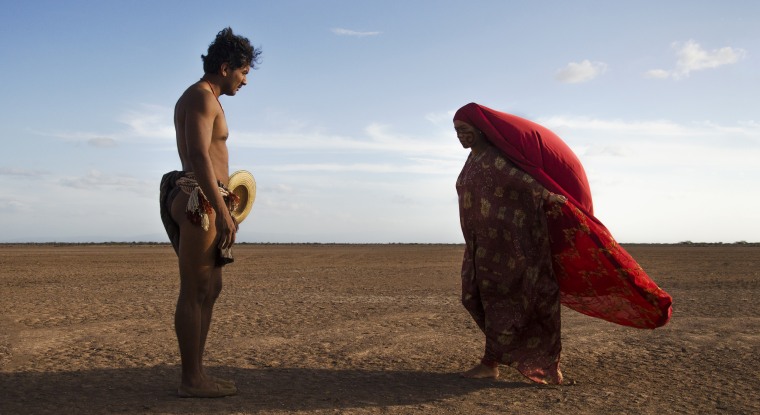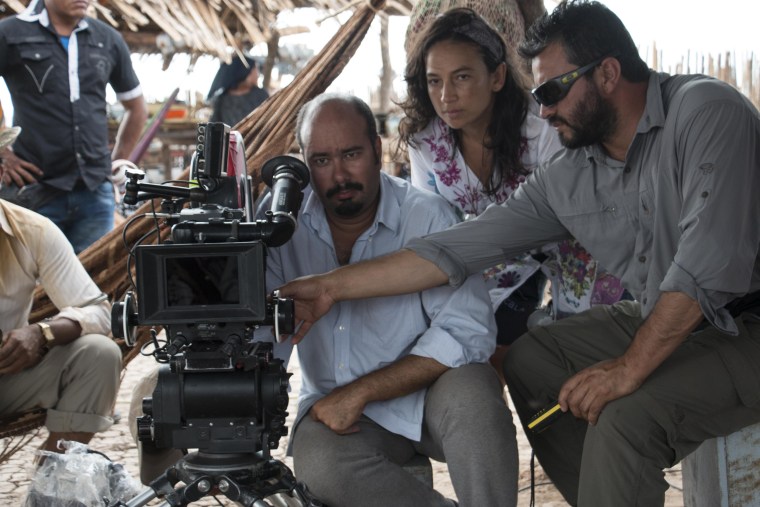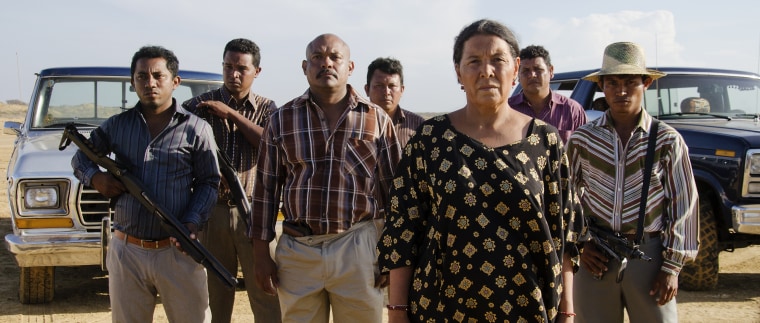In Colombia, the fallout from the half-century of drug violence remains a loaded topic, bundled up in pain and shame over what happened and how the world still views the country. But Colombian filmmakers Ciro Guerra and Cristina Gallego have found an engrossing and visually stunning new way to tell the story from a very unique lens.
“Birds of Passage” follows the tragic unfolding of events surrounding Rapayet (José Acosta), an ambitious member of the Wayúu tribe in Northern Colombia who becomes ensnared in an escalating drug war and family feud.
Set in the 1960s and ’70s before the heyday of Pablo Escobar, the story of corruption, greed and family is seen from the perspective of the movie's indigenous characters.
Guerra and Gallego explained that they're tackling a topic that is rarely touched by Colombian filmmakers.
“To talk about narco trafficking is taboo,” Gallego said. “When you look at the history of the cinema in Colombia, there are not more than five films about narcos. Most of the representation has been made from outside the country.”

The film is epic in scale and nature. The movie’s saga is broken up into chapters or cantos featuring a singer detailing what happens in the story. The film’s setting looks like endless seas of deserts and forests, and scenes of surrealism and magical realism bubble up throughout the film.
The duo last worked together on the striking black-and-white opus “Embrace of the Serpent,” giving their homeland its first Oscar nomination almost four years ago.
When the filmmakers decided to start doing research for their newest film, they didn't find that many sources of information.
"There are very few literature or documents, but the stories that people would tell are really interesting, so we did our own research. We took particular moments, particular scenes, particular aspects, characters and started organizing them in a fictional way,” Guerra said.
“It starts with the Wayúu people telling us their stories,” Guerra said. “Those stories reminded us of Greek tragedy, reminded us of the García Márquez world, like films from the '70s that we have seen."
One of the most fruitful results of Guerra and Gallego’s collaboration with the Wayúu is the influence on the film’s eye-catching cinematography, which incorporates the tribe’s symbolic associations with certain colors.
“We took that color palette, and we just make it more expressionist,” Guerra said. “Every color that is used is really saying something about the story. There's a level of the visual imagery of the film, but it's only understandable to the Wayúu. Even if you cannot understand it, you can still feel its expressiveness.”
The most striking of these colors is the movie’s use of richly toned reds, like in the courtship dance scene where Zaida (Natalia Reyes) wears a billowing maroon dress as she chases after Rapayet in a circle. It’s the image that adorns most of the movie’s posters.

“That is the color of war for the Wayúu,” Guerra said about the deep red hues in the film. “There's a little bird that appears that has that color, and in the Wayúu mythology, that bird is the one that creates the universe. That color is usually used for family, but it's also the color of war and the color of mourning."
"The way that color is so important to them and has so much meaning," added Guerra, "it had to have so much meaning in the film.”
Although both Guerra and Gallego's biggest movies prominently feature indigenous actors and stories, neither of the directors claim indigenous ancestry. Instead, the filmmakers threw themselves into deep anthropological research and collaborated with the Wayúu tribe.
“We didn't want to make a film about them, we wanted to make a film with them,” Guerra said, "They demanded that they were the first ones to see it when it was finished, so the premiere in Colombia was with them in the Wayúu territory. They felt that their culture and their history had been represented in a true way, so they were very happy with the film.”
Beyond the stunning cinematography and its unique, indigenous perspective, the filmmakers said it was important to take on an untold, overlooked angle of the country's history around the drug wars.
"Now is the time to change it, and shake it up, and understand that there are more diverse voices that need to be heard,” Guerra added.
“Birds of Passage” is in select theaters now.
